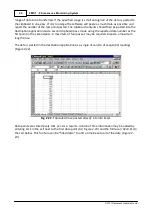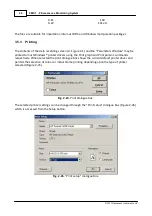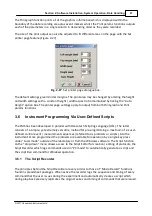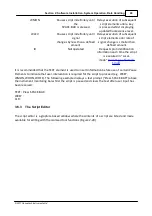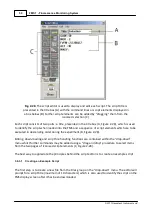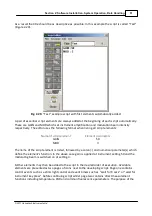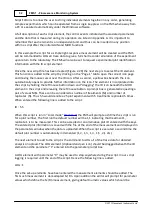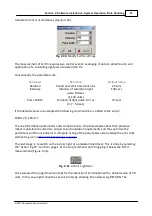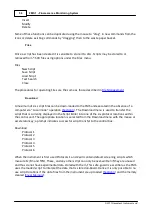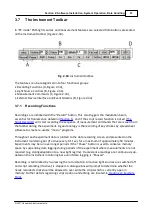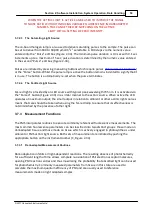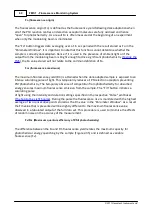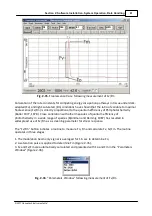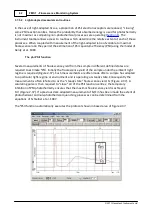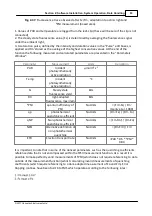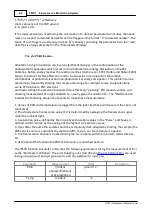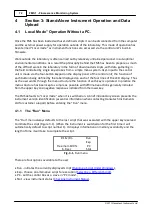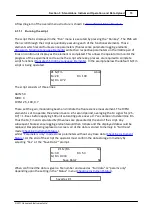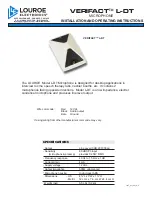
58
FMS 1 - Fluorescence Monitoring System
© 2017 Hansatech Instruments Ltd
3.7.2
Light Source Controls
The FMS control unit has four integral light sources which are controlled from the instrument
toolbar
.
3.7.2.1
The Modulation Beam
For most experiments the modulation beam must be switched on at the beginning of the recording
and switched off at the end. This is done automatically during initiation and termination of
recording with the “Record” button. However, it is possible to turn the modulating beam off during
an experiment by clicking the “Mod” button (Figure 2-34). When this is done the fluorescence
signal will drop to zero bits and remain at this level until the beam is restored. This function may
be useful in a experimental situation where it is important to stop all photochemistry for a period;
the only certain method for achieving this is to prevent any light from reaching the sample. It may
be useful to pause data logging in this situation as the instrument is unable to detect a
fluorescence signal.
The modulating beam can be operated at one of three set intensities with control provided
through the Hardware function of the “drop-down” menu. The fluorescence signal that is detected
by FMS is directly proportional to the intensity of the modulating beam incident upon the sample.
Only by keeping this constant during an experiment is it possible to monitor changes that relate to
sample photochemistry. As a result the optimum modulation intensity should be configured prior
to starting the experiment on a piece of test tissue (
), as the FMS software will not
allow changes whilst recording is in progress.
3.7.2.2
The Actinic Light Source
Actinic light is provided by operating the halogen saturation lamp at reduced power. The actinic
output range is 0 to 3000 µmolm
-2
s
-1
(measured at the end of the fibre optic) selectable in 50
steps via the numeric value entered in the edit box next to the “Actinic” button. The “Actinic”
button initiates illumination and remains indented until re-clicked to switch the lamp off. It is
important to note that the lamp must be switched off and re-started with a new numeric value in
the edit box to change illumination intensity.
Whilst the actinic lamp is active the contribution from the modulating beam to the total amount of
absorbed irradiation by the sample becomes negligible. As a result it is possible to increase the
rate of modulation beam pulsing without significantly affecting the extent of variable fluorescence
(
.). The FMS automatically performs this to maximise the signal to noise
performance of the instrument. The extra data generated by this process is averaged to maintain
an overall data logging rate of 10 readings per second.
IF THERE IS A LARGE DISTANCE BETWEEN THE FIBRE-OPTIC AND THE
SAMPLE IT IS POSSIBLE THAT THE INCREASED MODULATION RATE USED
Summary of Contents for FMS1
Page 1: ......
Page 7: ...Section 1 Measurement Principles and Hardware ...
Page 21: ...Section 2 Software Installation System Operation Data Handling ...
Page 70: ...70 FMS 1 Fluorescence Monitoring System 2017 Hansatech Instruments Ltd ...
Page 71: ...Section 3 Stand Alone Instrument Operation and Data Upload ...
Page 83: ...83 Section 3 Stand Alone Instrument Operation and Data Upload 2017 Hansatech Instruments Ltd ...

